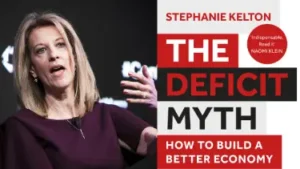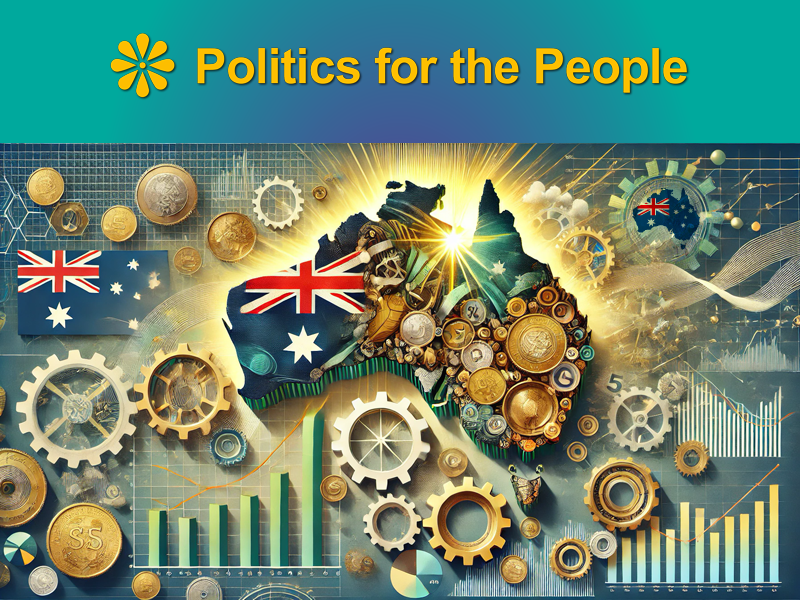Description
Delve into the intricacies of Australia’s monetary sovereignty and how it shapes our approach to economic challenges and opportunities.
Introduction to Australia’s Monetary Sovereignty
Australia’s monetary sovereignty is a fundamental aspect of its economic identity that is often misunderstood. Unlike a household or a private corporation, the Australian government is not financially constrained in the traditional sense. As the sole issuer of the Australian dollar, the government has unique powers that enable it to manage the nation’s economy effectively. This capability is crucial for ensuring that Australia stays a fair and prosperous society.
What is Monetary Sovereignty?
The Power to Issue Currency

Australia’s monetary sovereignty means that the government has the exclusive authority to produce its currency, the Australian dollar, and manage its supply. Australia’s monetary sovereignty power is distinct from other entities within the economy, such as households or businesses, which are users of the currency.
Australia’s monetary sovereignty can in theory create as much money as needed to meet public spending requirements without the risk of bankruptcy that a private company or individual might face. This aspect of monetary sovereignty allows for greater flexibility in addressing national priorities and challenges.
Managing Economic Resources
The True Constraint — Resource Availability
Although the government can generate currency, it must still contend with the finite availability of physical resources. These include labor, raw materials, technology, and infrastructure. The primary constraint on government spending is not financial but resource-based; spending must be matched to the economy’s ability to absorb it without causing undesirable effects like inflation.
Strategic management of these resources ensures that spending leads to actual improvements in well-being and sustainable economic growth, rather than merely increasing prices.
Risks in Public Finance
Inflation Versus Insolvency
In public finance, understanding the difference between inflation and insolvency is crucial, especially for a sovereign currency issuer like Australia. The Australian government, having monetary sovereignty, faces different financial constraints compared to private entities and households.
Understanding Insolvency in the Public Sector
Insolvency refers to the inability of an entity—be it an individual, a company, or a government—to meet its financial obligations as they come due. For private entities, this can lead to bankruptcy. However, for a government that issues its own currency, like Australia, the risk of insolvency is practically non-existent.
The Australian government can always create more of its currency to fulfill its debt obligations, meaning it cannot run out of money in the same way businesses or individuals can. This capacity to avoid insolvency is a significant advantage, allowing the government to plan long-term investments and funding without the immediate worry of running out of cash.
The Real Challenge: Managing Inflation
While insolvency is not a concern for the Australian government, managing inflation is a critical challenge. Inflation occurs when the overall price levels in an economy increase, typically measured by the Consumer Price Index (CPI).
In the context of government spending, inflation can arise if the government injects too much money into the economy, leading to a situation where the amount of money exceeds the economy’s ability to produce goods and services.
Balancing Economic Growth and Inflation
The key to preventing inflation while still promoting economic growth lies in balancing the money supply with the real productive capacity of the economy. If the government spends within the economy’s capacity to absorb that spending—by utilizing idle resources and improving productivity—it can avoid inflation.
This involves careful monitoring and adjustments in fiscal policies to ensure that spending increases do not outpace the growth in productivity and resource utilization.
Potential Consequences of Excessive Inflation
Excessive inflation can lead to several negative outcomes, including eroded purchasing power for consumers, increased costs for businesses, and reduced confidence in the economy. It can also lead to higher interest rates as the central bank attempts to control inflation by making borrowing more expensive, which can slow economic growth.
Strategic Government Spending
To manage inflation effectively, the government must focus on strategic spending. This includes investing in areas that enhance the productive capacity of the economy, such as education, infrastructure, and technology. By doing so, the government can ensure that any increase in the money supply is matched by an increase in goods and services, maintaining price stability.
In conclusion, while the risk of insolvency is not a concern for the Australian government, managing inflation is an ongoing challenge that requires careful economic planning and policy-making. By focusing on sustainable spending and investments that enhance the economy’s productive capacity, the government can foster stable and inclusive economic growth without triggering undesirable inflationary pressures.
Economic Strategies for Prosperity
Using the Economy’s Productive Capacity
To harness the full potential of the economy, it’s essential to understand and use its productive capacity effectively. This involves not just investing in physical assets like infrastructure and technology but also in human capital, such as education and healthcare.
By ensuring that all available resources are being used efficiently, the government can promote higher economic growth and stability without triggering inflationary pressures. This approach helps build a more resilient and inclusive economy.
Economic Productive Capacity is Currently Underutilised
To fully use Australia’s economic productive capacity, the government can undertake several strategic initiatives focused on enhancing resource allocation, stimulating innovation, and fostering a more inclusive economic environment. Here are some key strategies:
1. Investment in Infrastructure: Developing and upgrading infrastructure such as transportation, communication networks, and energy systems can enhance efficiency and productivity across various sectors of the economy. This not only supports existing industries but also paves the way for new industries to emerge and thrive.
2. Education and Training: Investing in education and vocational training can address skills mismatches in the labor market and prepare the workforce for future demands, particularly in high-growth sectors like technology and renewable energy. This includes expanding access to higher education and strengthening Technical and Further Education (TAFE) institutions.
3. Research and Development (R&D) Incentives: Encouraging innovation through increased funding for research and development, particularly in universities and public research institutions, can lead to technological advancements and higher productivity. Providing tax incentives and grants for private sector R&D can also stimulate commercial innovation.
4. Regulatory Reform: Streamlining regulations to reduce the burden on businesses, particularly small and medium enterprises, can encourage entrepreneurship and make it easier for businesses to expand and hire more employees. Simplifying the process for starting a business and reducing red tape can enhance overall economic dynamism.
5. Fiscal Policies: Implementing targeted fiscal policies such as tax breaks for critical sectors or increased spending on public services can stimulate economic activity. Well-planned fiscal stimuli, especially in times of economic downturn, can help in using idle resources and boosting employment.
6. Environmental Sustainability: Investing in sustainable practices and technologies not only addresses environmental challenges but also opens new economic opportunities. For instance, Australia can become a leader in renewable energy production, which could stimulate job creation and technological innovation.
7. Healthcare Expansion: Enhancing healthcare access and quality can improve the workforce’s overall health and productivity. Preventive health measures and robust healthcare systems reduce absenteeism and increase the longevity of workers’ careers.
8. Social Inclusion Programs: Reducing barriers to employment for underrepresented and disadvantaged groups can increase workforce participation rates. Initiatives might include support for Indigenous communities, immigrants, and people with disabilities, ensuring they have equal opportunities to contribute to the economy.
By focusing on these areas, the Australian government can not only use the country’s existing resources more effectively but also expand its overall productive capacity, leading to sustained economic growth and improved societal well-being.
Conclusion
Understanding and using Australia’s monetary sovereignty is crucial for making informed decisions in public finance. By focusing on effective resource management and inflation control, rather than worrying about running out of money, the Australian government can create a more fair and prosperous society. This change in thinking in economic thinking is vital for tackling contemporary economic challenges effectively.
Call to Action
What steps should Australia take to perfect the use of its economic resources? Share your thoughts below and engage in a discussion about how a deeper understanding of monetary sovereignty could transform our economic strategies.
Please share this article about Australia’s monetary sovereignty with your contacts and on social media to broaden the conversation about Australia’s economic future!
References:
Governor of RBA Creates Money Out of Thin Air: https://youtu.be/6N6lD1tSNmA
Fear of spending: https://australiainstitute.org.au/post/fear-of-spending/
Modern Monetary Theory: How MMT is challenging the economic establishment: https://www.abc.net.au/news/2020-07-17/what-is-modern-monetary-theory/12455806
We Need to Talk About MMT: https://www.fabians.org.au/afr1_mmt_mccall
The ALP, modern monetary theory and an Australian Green New Deal: https://independentaustralia.net/politics/politics-display/the-alp-modern-monetary-theory-and-an-australian-green-new-deal,12773
Modern monetary theory, the economy and the virus: https://era.org.au/modern-monetary-theory-the-economy-and-the-virus/
Articles on modern monetary theory: https://theconversation.com/us/topics/modern-monetary-theory-35017
Modern Monetary Theory and Healthcare in Australia: https://iht.deakin.edu.au/wp-content/uploads/sites/153/2021/06/IHT_Position_Paper.MMT_healthcareinAust_140621.pdf
The Battle for the Bank: Australia’s Struggle for Monetary Sovereignty: https://youtu.be/Qfrk5TCARpM

